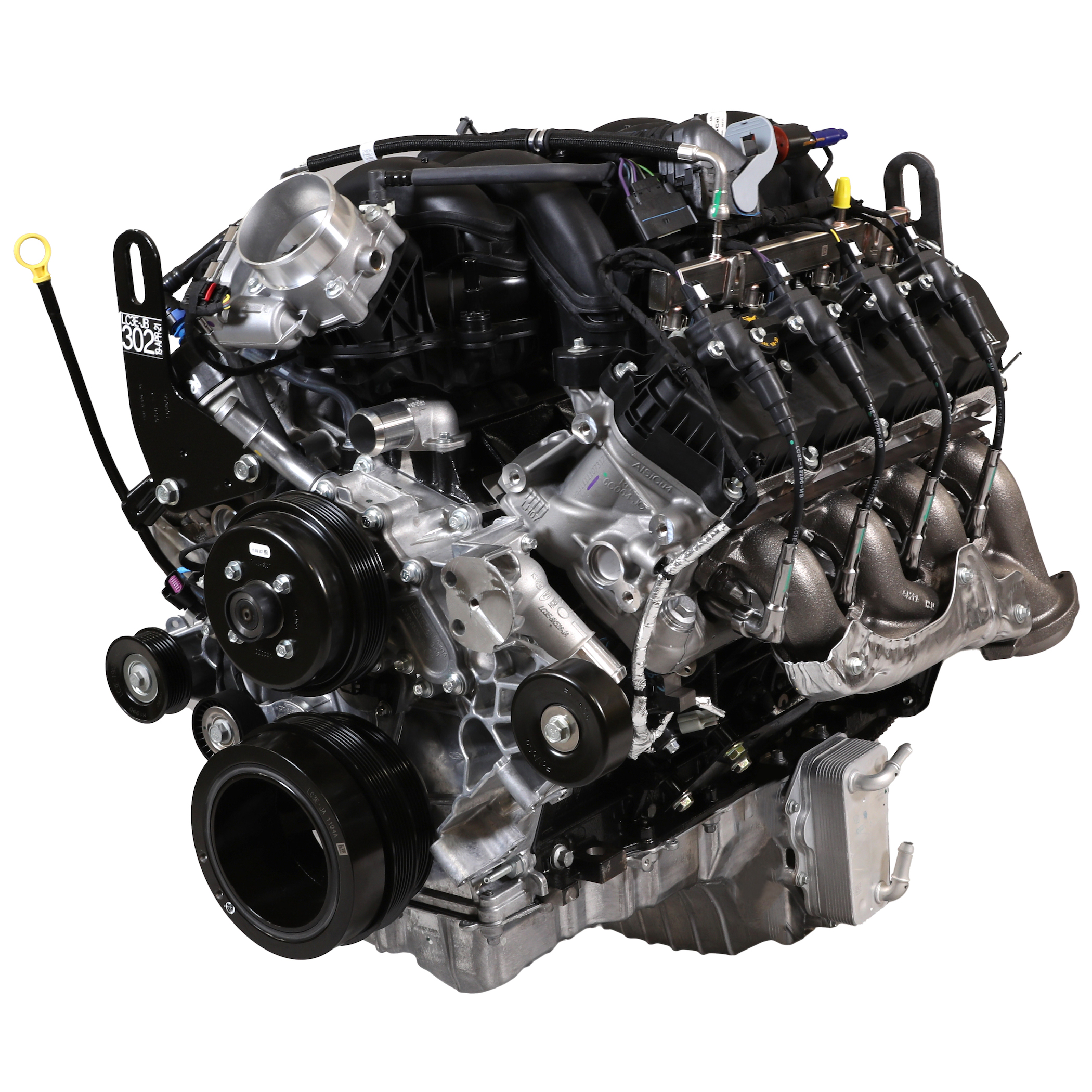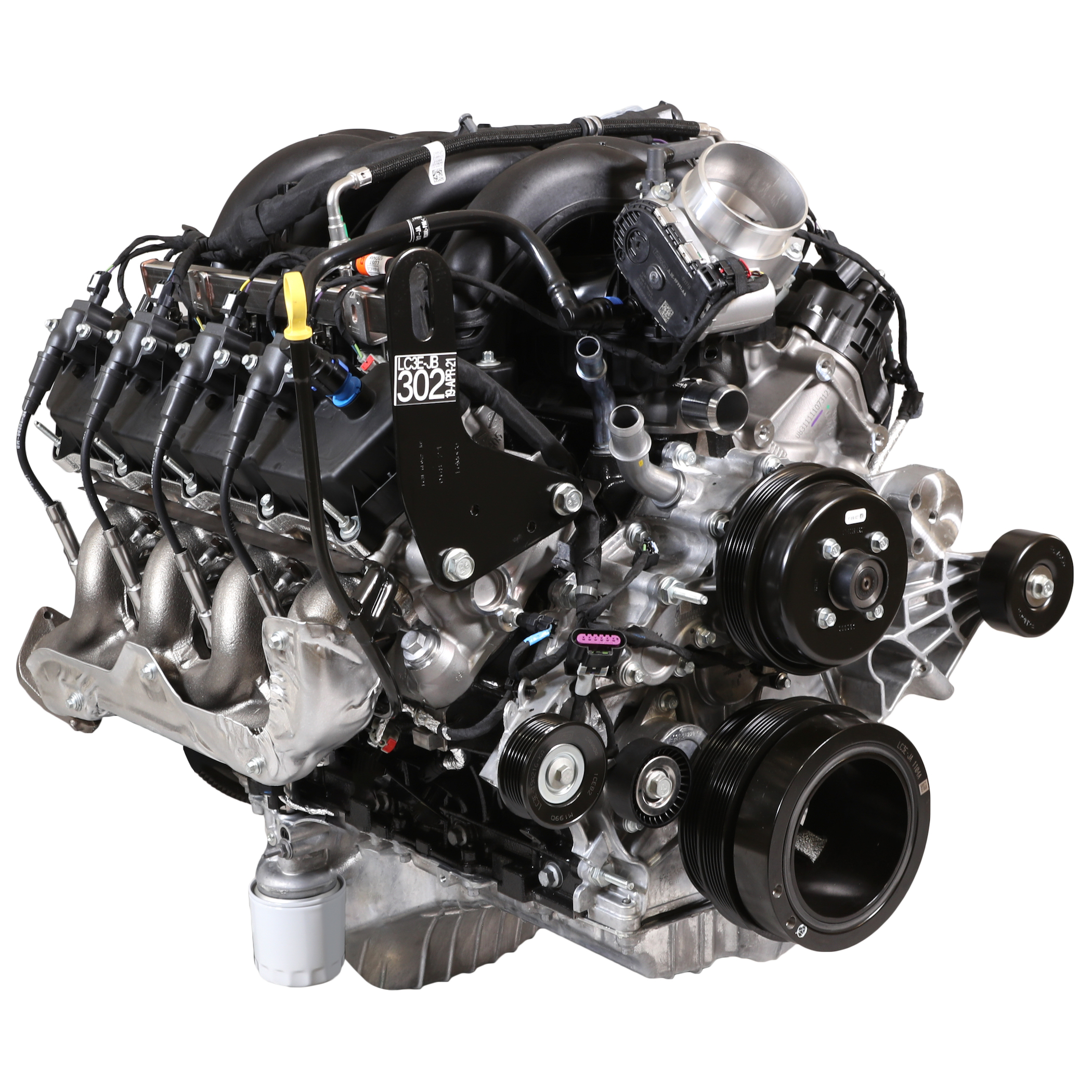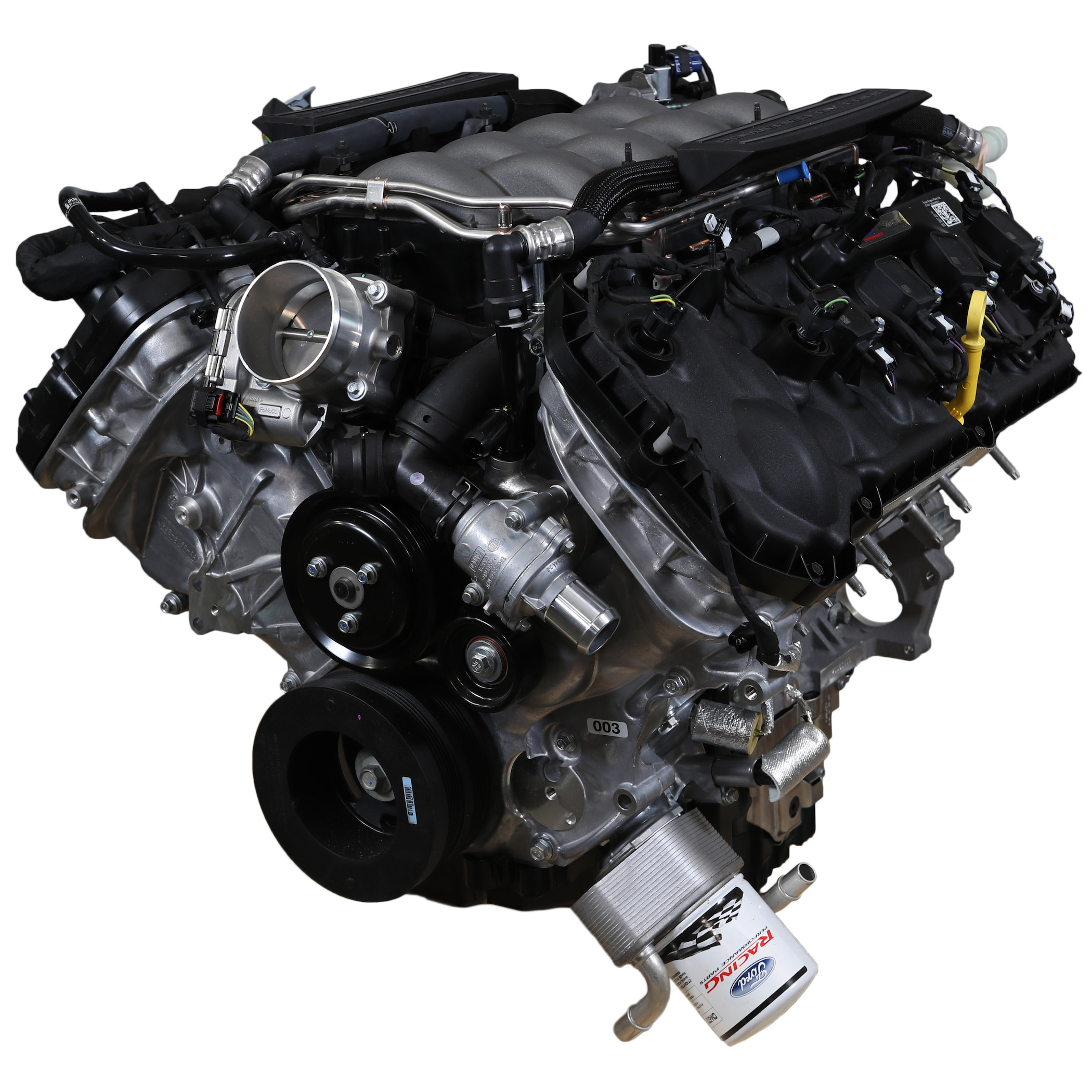Ford's New 7.3L Crate Engine Is a Breath Of Blue Oval Fresh Air

For all their many virtues, we just haven’t seen many late model Ford V8s getting the nod for retrofitment into people’s project cars, which we reckon is a bit of a shame.
The ‘Modular’ family of V8 engines architecture actually traces back to the mid-80s, but on Aussie soil we’re more familiar with the Modular family thanks to the Boss V8s from the BA-FG Falcon era, the Coyote V8s from late FG Falcon and the Mustang, and their spicy step cousin the factory supercharged ‘Miami’, engineered by Ford Performance Vehicles here in Oz for their swansong hero vehicles.
The Coyote V8s were nothing to sneeze at and really moved the meter compared to the Falcon’s previous Boss V8 hearts, which came in a distant third behind both the turbocharged and naturally aspirated Barra six cylinders in terms of performance. The Boss V8s also failed to register any significant blows against Holden’s dominating LS engine platform, beloved for its ease of fitment into other makes and models, huge aftermarket support and ease of performance tuning.
The Coyote, debuted in the FG FPV range, made the same power despite being almost half a litre smaller in engine capacity than the Boss V8s and by the time the Gen3 Mustang-era Coyotes arrived, Aussie enthusiasts were falling in love with Ford V8s all over again.
The Yanks had thrown some support behind the Mustang-era V8 meaning that when we got our hands on them they’d already figured out things like performance exhaust systems and supercharger upgrades, however street machiners were reluctant to commit to fitting one to their current project car.

For all the benefits of the dual overhead cam technology, unfortunately it moved too much of the engine hardware into giant, hulking cylinder heads that barely fit in the Falcon and Mustang engine bays, let alone the compact bay of a 1960-90 project car! They’re also around 20kg heavier than an LS3 which, while not a deal breaker on its own, when you consider the work you’d have to do to an early Falcon to make the Modular V8 fit, forced many people to scratch it off their list of potential engine conversions.
We spoke to engine conversion specialist Jason Waye from Muscle Garage whose Tuff Mounts branded engine mounts and conversion kits have been helping enthusiasts with exotic engine swaps for almost two decades. “At the widest part of the Modular V8’s rocker covers the engine is 760mm wide. At their widest point, the LS is only 530mm,” he explains as his tape measure rattles back into its holster at speed.
“Early Falcon engine bays are narrow - you’ve got companies like RRS who do kits to fit them but it involves scalloping the strut towers and installing coilovers for more room. I tried to fit a Modular V8 into a VN Commodore engine bay for a laugh, but even their engine bay wasn’t big enough! They’re also a front hump sump and most conversions call for a rear hump, but in the second hand market they’re comparable price wise to an LS so they are tempting,” he continues.
The slither of light at the end of the tunnel for Ford V8 engine fans might be the brand’s 7.3L Godzilla V8 which is currently enjoying some time in the limelight thanks to Cleetus McFarland’s ‘McFlurry’ Fox Body Mustang project car.

Herrod Performance are third generation Blue Oval gurus and one of the country’s leading purveyors of Ford Performance crate engines, and Chris Herrod shared some of his experience with the Godzilla V8s.
“The Coyote engines did well with the kit cars and hot rods where space wasn’t an issue, but when it comes to the Godzilla, if you can fit a Windsor you can fit a Godzilla engine which really opens it up to the street machining market,” explains Chris of the size efficiencies Ford have found by deleting three cams and moving the fourth inside the engine block.
“Price wise they’re very competitive, and the advertised horsepower figure is really conservative. We’ve probably moved 45 engines this calendar year alone - we’re bringing them in ten at a time and they’re usually all sold before they’re even off the ship!” he laughs. “We’ve already sold a handful of Whipple supercharger packages for them too, destined for everything from AC Cobras to early Falcons,” adds Chris.
Herrod Performance’s John McAlinden chimes in with his technical expertise. “A lot of the guys making them fit are moving to aftermarket front ends which move the steering forward, giving the oil pan extra room,” says John of the process of fitting a Godzilla V8. “They might be rated at 430hp but that figure is really conservative, plus with 7.3L of capacity you’ve got to factor in the torque they’re making, too.”

John goes on to say that one of the Godzilla’s most redeeming features is that the back side of the engine is common with the Modular V8, meaning that an aftermarket conversion bellhousing opens up the door for enthusiasts to run their existing gearbox behind the FoMoCo monster motor.
Elsewhere in the aftermarket, performance tuning powerhouse Harrop Engineering in conjunction with Dandy Engines have already seen over 1,000hp out of a Harrop-supercharged Godzilla V8 on stock internals, and over 1,300 flywheel horsepower with a built motor on E85! The combo is already installed in an XA Falcon which to date had run an 8.3sec as a full weight streetcar.
Check out the dyno video HERE:
Comments
No posts found










